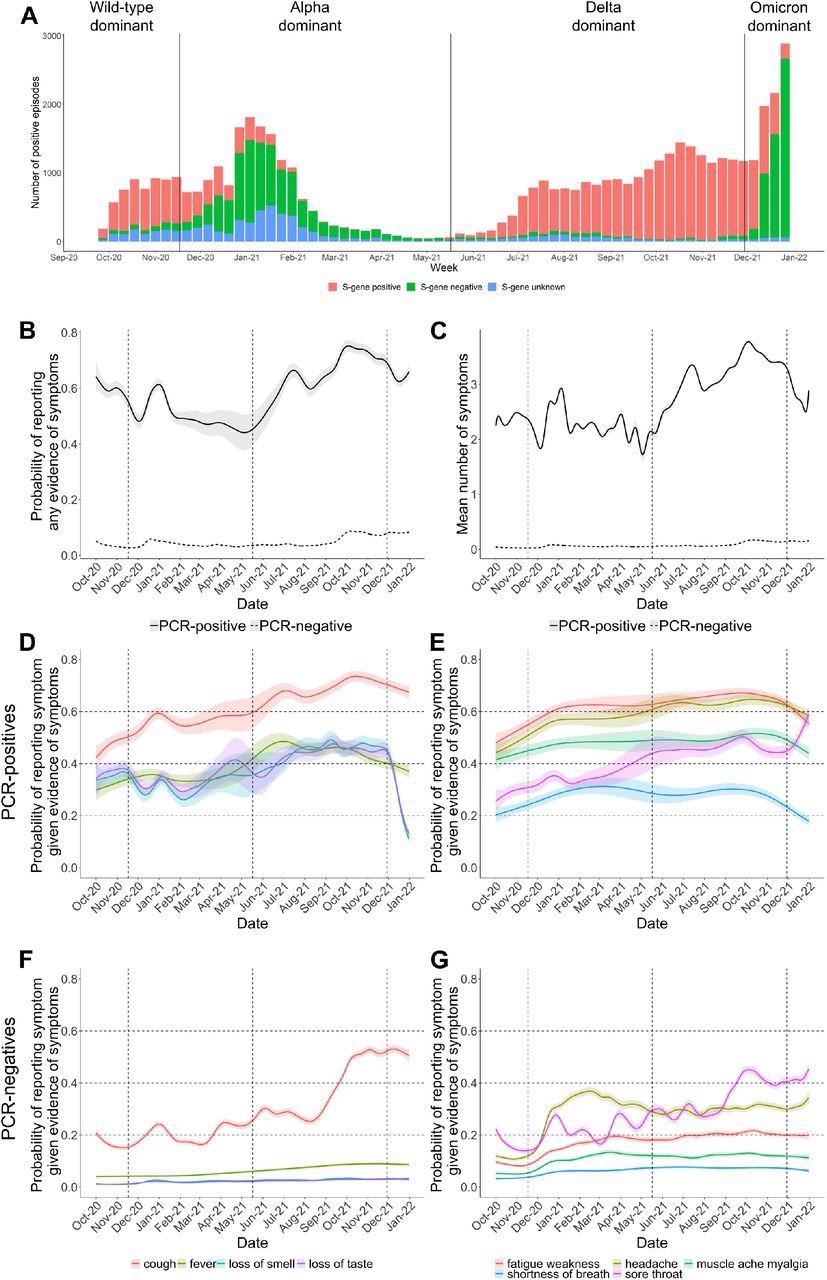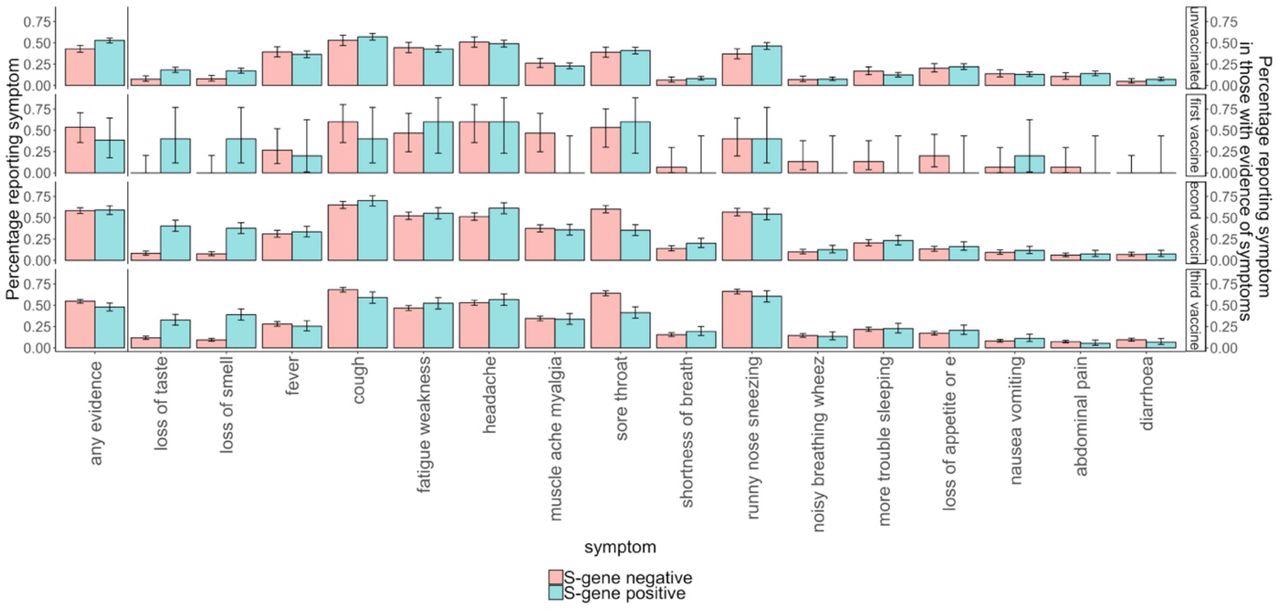
 This news article was a review of a preliminary scientific report that had not undergone peer-review at the time of publication. Since its initial publication, the scientific report has now been peer reviewed and accepted for publication in a Scientific Journal. Links to the preliminary and peer-reviewed reports are available in the Sources section at the bottom of this article. View Sources
This news article was a review of a preliminary scientific report that had not undergone peer-review at the time of publication. Since its initial publication, the scientific report has now been peer reviewed and accepted for publication in a Scientific Journal. Links to the preliminary and peer-reviewed reports are available in the Sources section at the bottom of this article. View Sources
Introduction
Amid the rapid spread of the SARS-CoV-2 Omicron VOC, numerous research projects are investigating the symptoms and severity associated with infection with this variant.
However, due to the community transmission of Omicron coinciding with the transmission of other winter respiratory viruses common in the Northern hemisphere, it has become difficult to isolate SARS-CoV-2 symptoms. The overlap of symptoms of the Omicron VOC and winter respiratory viruses can therefore adversely affect the symptomatology of Omicron, which further impacts clinical and testing policies.
About the study
In the present study, the researchers investigated the symptoms of Omicron infection and their divergence from symptoms caused by other variants of SARS-CoV-2.
The researchers compared the symptoms reported in SARS-CoV-2 infections in a reverse-transcriptase polymerase chain reaction (RT-PCR)-positive and RT-PCR-negative cases from October 2020 to November 2021, which is when the spread of the Omicron VOC was on the rise. The study excluded cases with a high pretest probability of undetected coronavirus disease 2019 (COVID-19) and cases with long-COVID-19 symptoms.
A supplementary method involving the analysis of SARS-CoV-2 RT-PCR tests of the nose and throat swabs of patients collected from October 1, 2020, to December 31, 2021, was also used. The study was conducted on patients aged two to ten years after obtaining written informed consent from their parents and on patients aged ten to 15 years with written consent provided by them. Individuals aged 12 years and older self-collected the swabs while parents/caregivers collected the swabs of patients aged less than 12 years to avoid transmission of the virus.
RT-PCR for three SARS-CoV-2 genes of the nucleocapsid (N) protein, spike (S) protein, and ORF1ab was conducted on all collected samples. While the presence of S-gene alone was not considered as a determinant of SARS-CoV-2 infection, the detection of at least a single N-gene and/or ORF1ab was sufficient to consider a sample as SARS-CoV-2-positive.
The researchers defined reinfection as either the first positive test in each RT-PCR-positive infection occurring more than 120 days after the initial positive test with a preceding negative test or the first positive test after four consecutive negative tests. Such cases of reinfection were also included in the study. Each SARS-CoV-2-positive case was classified as wild-type/Delta if a presence of an S-gene with N/ORF1ab/both was detected, while cases with either ORF1ab or N-gene were classified as Alpha-compatible or Omicron-compatible.
Study findings
A total of 53,617 RT-PCR-positive and 4,236,647 RT-PCR-negative episodes were reported between October 2020 and December 2021. Among these, 54% RT-PCR-positive cases and 4% RT-PCR-negative cases reported symptoms. The median age of the PCR-positive population was 40 years and that of the PCR-negative population was 53 years.

Symptoms in those testing positive and negative for SARS-CoV-2 prior to and following the emergence and dominance of Omicron in December 2021 in the UK. Panel A shows the number of PCR-positive infection episodes that were S-gene negative (Alpha-compatible November-2020 to May-2021; Omicron-compatible December-2021) and S-gene positive (Delta-compatible June-2021 onwards). Vertical lines indicate periods when new variants came to dominate: wild type before 17 November 2020, then Alpha before 17 May 2021, then Delta; the first Omicron cases were detected from 29 November 2021. Panels B and C show the probability of reporting symptoms and the number of symptoms (out of the 12 elicited throughout the study period) of all PCR-positive infection episodes and all PCR-negative comparator visits. Panels D-G show the probability of specific symptoms in symptomatic PCR-positive infection episodes (panels D and E) and in symptomatic PCR-negative comparator study visits (panels F and G), after adjustment for age, sex, ethnicity (presented at the reference category age 45, male, white).
Symptoms like sore throat, cough, fever, shortness of breath, nausea, fatigue, myalgia, abdominal pain, diarrhea, loss of taste, loss of smell, and headache were reported in the first seven days of the study. The presence of these symptoms indicated that the patient was symptomatic for COVID-19.
By December 31, 2021, with the emergence of the Omicron VOC, the reported loss of taste/smell declined from about 44% to between 11-13% in RT-PCR-positive patients. The reported loss of taste/smell was uncommon in RT-PCR-negative individuals in the period before and after December 2021.

Percentage of S-gene-negative (Omicron-compatible) and S-gene-positive (Delta-compatible) symptomatic PCR-positives in December 2021 reporting different symptoms by vaccination status.
A significant reduction in RT-PCR-positive symptoms like fatigue, cough, headache, fever, myalgia, and shortness of breath was reported, while no notable change was observed in RT-PCR-negative cases.
Reports of throat soreness increased from 45% to 59% in RT-PCR-positive symptomatic patients and from 41% to 45% in RT-PCR-negative symptomatic patients. Furthermore, an increasing number of RT-PCR-positive symptomatic patients also reported having runny noses. The researchers found no correlation between trends of symptoms and the vaccination status of patients.
Conclusions
Based on the current study findings, the SARS-CoV-2 Omicron VOC was observed to cause fewer lower respiratory tract symptoms and a higher number of upper respiratory tract symptoms. Additionally, an increase in sore throat reports in both RT-PCR-positive and RT-PCR-negative patients, as well as a reduction in SARS-CoV-2-specific symptoms like loss of taste and/or smell, has complicated the symptom-based detection of Omicron VOC infections.

 This news article was a review of a preliminary scientific report that had not undergone peer-review at the time of publication. Since its initial publication, the scientific report has now been peer reviewed and accepted for publication in a Scientific Journal. Links to the preliminary and peer-reviewed reports are available in the Sources section at the bottom of this article. View Sources
This news article was a review of a preliminary scientific report that had not undergone peer-review at the time of publication. Since its initial publication, the scientific report has now been peer reviewed and accepted for publication in a Scientific Journal. Links to the preliminary and peer-reviewed reports are available in the Sources section at the bottom of this article. View Sources
Journal references:
- Preliminary scientific report.
Vihta, K. D., Pouwels, K. B., Peto, T. E. A., et al. (2022). Omicron-Associated Changes in SARS-CoV-2 Symptoms in The United Kingdom. medRxiv. doi:10.1101/2022.01.18.22269082. https://www.medrxiv.org/content/10.1101/2022.01.18.22269082v1.
- Peer reviewed and published scientific report.
Vihta1, Karina Doris, Koen B Pouwels, Tim EA Peto1, Emma Pritchard, Thomas House, Ruth Studley, Emma Rourke, et al. 2022. “Omicron-Associated Changes in SARS-CoV-2 Symptoms in the United Kingdom.” Clinical Infectious Diseases, August. https://doi.org/10.1093/cid/ciac613. https://academic.oup.com/cid/article/76/3/e133/6653436.